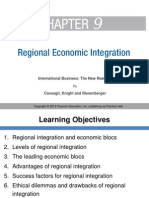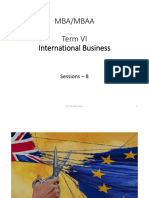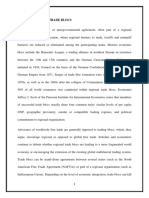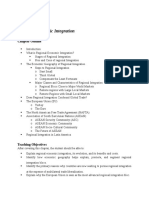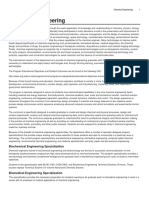0 ratings0% found this document useful (0 votes)
9 viewsChapter 5 Presentation
Chapter 5 Presentation
Uploaded by
Jannah Abdullah PagaladCopyright:
© All Rights Reserved
Available Formats
Download as PDF, TXT or read online from Scribd
Chapter 5 Presentation
Chapter 5 Presentation
Uploaded by
Jannah Abdullah Pagalad0 ratings0% found this document useful (0 votes)
9 views18 pagesCopyright
© © All Rights Reserved
Available Formats
PDF, TXT or read online from Scribd
Share this document
Did you find this document useful?
Is this content inappropriate?
Copyright:
© All Rights Reserved
Available Formats
Download as PDF, TXT or read online from Scribd
Download as pdf or txt
0 ratings0% found this document useful (0 votes)
9 views18 pagesChapter 5 Presentation
Chapter 5 Presentation
Uploaded by
Jannah Abdullah PagaladCopyright:
© All Rights Reserved
Available Formats
Download as PDF, TXT or read online from Scribd
Download as pdf or txt
You are on page 1of 18
UNIVERSITY OF SOUTHERN MINDANAO
Regional Economic Integration
Prepared by: R. Panaguiton
Business Administration Department
College of Business, Development Economics, and Management
Chapter Objectives
1. Describe the different levels of regional economic integration.
2. Understand the economic and political arguments for regional
economic integration.
3. Understand the economic and political arguments against
regional economic integration.
4. Explain the history, current scope, and future prospects of the
world's most important regional economic agreements.
5. Understand the implications for business that are inherent in
regional economic integration agreements.
What Is Regional
Economic Integration?
• Regional economic integration - agreements between
countries in a geographic region to reduce tariff and non-
tariff barriers to the free flow of goods, services, and
factors of production between each other
• Question: Do regional trade agreements promote free
trade?
• In theory, yes, but the world may be moving toward a
situation in which a number of regional trade blocks
compete against each other
What Are The Levels Of
Regional Economic Integration?
1. A free trade area eliminates all barriers to the trade of
goods and services among members
2. A customs union eliminates trade barriers between
members and adopts a common external trade policy
3. A common market has no trade barriers between
members, a common external trade policy, and the free
movement of the factors of production
What Are The Levels Of
Regional Economic Integration?
4. An economic union has the free flow of products and
factors of production between members, a common
external trade policy, a common currency, a
harmonized tax rate, and a common monetary and
fiscal policy
5. A political union involves a central political apparatus
that coordinates the economic, social, and foreign
policy of member states
What Are The Levels Of
Regional Economic Integration?
Levels of Economic Integration
Why Should Countries
Integrate Their Economies?
• All countries gain from free trade and investment -
regional economic integration is an attempt to exploit the
gains from free trade and investment
• Linking countries together, making them more dependent
on each other
• creates incentives for political cooperation and reduces
the likelihood of violent conflict
• gives countries greater political clout when dealing with
other nations
What Limits Efforts
At Integration?
• Economic integration can be difficult because
• while a nation as a whole may benefit from a regional free
trade agreement, certain groups may lose
• it implies a loss of national sovereignty
• Regional economic integration is only beneficial if the amount of
trade it creates exceeds the amount it diverts
• trade creation occurs when low cost producers within the free
trade area replace high cost domestic producers
• trade diversion occurs when higher cost suppliers within the
free trade area replace lower cost external suppliers
What Is The Status Of Regional Economic
Integration In Europe?
• Europe has two trade blocs
1. The European Union (EU) with 27 members
2. The European Free Trade Area (EFTA) with 4 members
• The EU is seen as the world’s next economic and
political superpower
What Is The Status Of Regional Economic
Integration In Europe?
Member States of The European Union in 2011
What Is The European Union?
• The devastation of two world wars on Western Europe
prompted the formation of the European Union (EU)
• members wanted lasting peace and to hold their own on the
world’s political and economic stage
• The Single European Act (1987) committed the countries to
work toward establishment of a single market by December 31,
1992
• The main institutions in the EU include:
1.The European Council
2.The European Commission
3.The European Parliament
4.The Court of Justice
What Is The European Union?
• The Maastricht Treaty committed the EU to adopt a single
currency
• created the second largest currency zone in the world
after that of the U.S. dollar
• used by 17 of the 27 member states
• Many countries have applied for EU membership
• Turkey has been denied full membership because of
concerns over human rights
What Is The Status Of Economic Integration
In The Americas?
• There is a move toward greater regional economic integration in the
Americas
• The most significant attempt is the North American Free Trade Area
(NAFTA) between the United States, Canada, and Mexico
• Other significant agreements include the
• Andean Community
• MERCOSUR
• a Free Trade of the Americas is under discussion
• Two smaller trade pacts in the Americas are
• the Central American Trade Agreement
• CARICOM
What Is The Status Of Economic Integration
In The Americas?
Economic Integration in the Americas
What Is The Status Of
Economic Integration In Asia?
• Various efforts at integration have been attempted in
Asia, but most exist in name only
• Association of Southeast Asian Nations (ASEAN)
• Asia-Pacific Economic Cooperation (APEC)
What Is The Status Of
Economic Integration In Africa?
• Many countries are members of more than one of the
nine blocs in the region
• But, since many countries support the use of trade
barriers to protect their economies from foreign
competition, meaningful progress is slow
• East African Community (EAC)
What Does Economic
Integration Mean For Managers?
• Regional economic integration
• opens new markets
• allows firms to realize cost economies by centralizing
production in those locations where the mix of factor costs and
skills is optimal
• But
• within each grouping, the business environment becomes
competitive
• there is a risk of being shut out of the single market by the
creation of a “trade fortress”
References
[1] Geringer, M., McNett, J., Minor, M., & Ball, D. (2015). International Business - Standalone book (1st ed.).
McGraw-Hill Education.
[2] Griffin, R., & Pustay, M. (2014). International Business: A Managerial Perspective (8th ed.). Pearson.
[3] Hill, C. (2014). International Business: Competing in the Global Marketplace (9th ed.). McGraw-Hill
Education.
[4] Hill, C., & Hult, T. G. M. (2018). International Business: Competing in the Global Marketplace (12th ed.).
McGraw-Hill Education.
[5] Hill, J. (2008). International Business: Managing Globalization. SAGE Publications, Inc.
You might also like
- COSO ERM FrameworkDocument15 pagesCOSO ERM Frameworkأسامةرومي100% (1)
- IB Economic integration PPT (1)Document31 pagesIB Economic integration PPT (1)Parth SinghNo ratings yet
- ECONOMICS & MGMT DecisionsDocument135 pagesECONOMICS & MGMT DecisionsAnand RamachandranNo ratings yet
- Lecture 3 - Major Trading BlocsDocument38 pagesLecture 3 - Major Trading BlocsWonso HunNo ratings yet
- Trading BlocsDocument21 pagesTrading BlocsAishwarya Chauhan100% (1)
- Chapter6 MKT 2023Document50 pagesChapter6 MKT 2023Abiy SolomonNo ratings yet
- Chapter 6Document79 pagesChapter 6yehunNo ratings yet
- International Business and Trade - Module 3Document6 pagesInternational Business and Trade - Module 3Reviewers KoNo ratings yet
- LMS - OU - IB - MODULE 9 - REGIONAL ECONOMIC INTEGRATION (Slide)Document17 pagesLMS - OU - IB - MODULE 9 - REGIONAL ECONOMIC INTEGRATION (Slide)2154010150duyenNo ratings yet
- Ibm - Iv-1-1Document36 pagesIbm - Iv-1-1ShaziyaNo ratings yet
- Foun 1301 Economy Lecture 3Document39 pagesFoun 1301 Economy Lecture 3Michael A. ShecklerNo ratings yet
- Chapter 5 Presentation - OffcialDocument14 pagesChapter 5 Presentation - OffcialKhôi Nguyễn AnhNo ratings yet
- Chapter 9Document41 pagesChapter 9Quang Nguyễn ThếNo ratings yet
- Materi Binal 8 Regional Economic IntegrationDocument37 pagesMateri Binal 8 Regional Economic IntegrationNicholas ZiaNo ratings yet
- Session3 Chapter34Document32 pagesSession3 Chapter34www.hahahaxNo ratings yet
- Ibt01-Chapter 5Document8 pagesIbt01-Chapter 5Rea Mariz JordanNo ratings yet
- Objective of Regional Integration: Amity School of BusinessDocument35 pagesObjective of Regional Integration: Amity School of BusinessArpit PandeyNo ratings yet
- I Unit 3 GlobalDocument35 pagesI Unit 3 GlobalSandesh AcharyaNo ratings yet
- Chapter 1 - Assessing The EnvironmentDocument48 pagesChapter 1 - Assessing The EnvironmentTravis XiaoNo ratings yet
- 2023 02 06 Session 5. Regional Economic IntegrationDocument39 pages2023 02 06 Session 5. Regional Economic Integrationdhaval patelNo ratings yet
- IB Chapter 9 Regional Economic IntegrationDocument34 pagesIB Chapter 9 Regional Economic IntegrationqianqianNo ratings yet
- 2.3 IbmDocument50 pages2.3 IbmSoundarya S ANo ratings yet
- Global Economic Environment - IDocument53 pagesGlobal Economic Environment - ISagar KCNo ratings yet
- Session 08 - SlidesDocument29 pagesSession 08 - SlidesishwaryaNo ratings yet
- Chap 8 IBDocument9 pagesChap 8 IBKasanova Sunan Real MadridNo ratings yet
- Int Marketing 2 - Institutions & World EconomyDocument36 pagesInt Marketing 2 - Institutions & World EconomyJoju JohnyNo ratings yet
- Business 10 Ppt Chapter 4 Part 1Document19 pagesBusiness 10 Ppt Chapter 4 Part 1cecilia capiliNo ratings yet
- Regional Market Groups and ImplicationsDocument4 pagesRegional Market Groups and ImplicationsKrizza Caryl GallardoNo ratings yet
- Module 5 Regional Economic IntegrationDocument40 pagesModule 5 Regional Economic IntegrationEirene VizcondeNo ratings yet
- 1.regeional Economic Integration: The ProsDocument8 pages1.regeional Economic Integration: The ProsDeva JoyNo ratings yet
- Economic Communities: An Agreement Between Countries To Lower Trade BarriersDocument9 pagesEconomic Communities: An Agreement Between Countries To Lower Trade BarriersVasanth KumarNo ratings yet
- Regional Economic IntegrationDocument50 pagesRegional Economic IntegrationIskandar Zulkarnain KamalluddinNo ratings yet
- Regional Economic IntegrationDocument43 pagesRegional Economic IntegrationMrigendra GuptaNo ratings yet
- International Trade BlocsDocument23 pagesInternational Trade BlocsVaibhav PunjabiNo ratings yet
- International Marketing: Multinational Market Regions and GroupsDocument29 pagesInternational Marketing: Multinational Market Regions and GroupsMaría AriasNo ratings yet
- Chapter 4: Understanding The Global Context of BusinessDocument23 pagesChapter 4: Understanding The Global Context of BusinessPradana MarlandoNo ratings yet
- Introduction To Trade BlocsDocument19 pagesIntroduction To Trade BlocsMT RANo ratings yet
- W5-L10- MNC - EU - World EconomyDocument35 pagesW5-L10- MNC - EU - World Economykieuhongngoc0605No ratings yet
- Investment, Trade DevelopmentDocument32 pagesInvestment, Trade Developmentemy anishaNo ratings yet
- IE & TA - Regional Integration BlocsDocument35 pagesIE & TA - Regional Integration BlocsTapesh SharmaNo ratings yet
- Module-1-Emerging MarketDocument13 pagesModule-1-Emerging Marketphotosswaraj56No ratings yet
- Emerging Markets Imp 2 Neha MaamDocument9 pagesEmerging Markets Imp 2 Neha Maamphotosswaraj56No ratings yet
- Regional Economic Integration: Chapter OutlineDocument15 pagesRegional Economic Integration: Chapter Outlinemacmac29No ratings yet
- Saarc, Eu, Sco, Imf, and WBDocument56 pagesSaarc, Eu, Sco, Imf, and WBmisbahfieNo ratings yet
- Manmgt3 9Document33 pagesManmgt3 9WilsonNo ratings yet
- Regional Economic IntegrationDocument31 pagesRegional Economic IntegrationNishan ShettyNo ratings yet
- Business 10 PPT Chapter 4Document20 pagesBusiness 10 PPT Chapter 4cecilia capiliNo ratings yet
- Group 3 Questions For Asian RegionalismDocument2 pagesGroup 3 Questions For Asian Regionalismmaroine charity de royNo ratings yet
- TCW Midterm Exam OutlineDocument6 pagesTCW Midterm Exam OutlineJoan VolfangoNo ratings yet
- Chpater 9Document19 pagesChpater 9Md Fardin Ehasan Ratul 2212400030No ratings yet
- International Business Part Three Theories and Institutions: Trade and InvestmentDocument13 pagesInternational Business Part Three Theories and Institutions: Trade and InvestmentkynthaNo ratings yet
- Regional Trade Blocs: Arun MishraDocument41 pagesRegional Trade Blocs: Arun MishraArun MishraNo ratings yet
- Pakistan-Regional Economic Integration Activity (PREIA)Document8 pagesPakistan-Regional Economic Integration Activity (PREIA)Umer MinhasNo ratings yet
- Regional Trade and Economic Integration in AfricaDocument49 pagesRegional Trade and Economic Integration in Africacliffton malcolm tshumaNo ratings yet
- What Are Regional Trading Blocs?Document4 pagesWhat Are Regional Trading Blocs?Aravinda ShettyNo ratings yet
- International Business: Strategy, Management, and The New RealitiesDocument25 pagesInternational Business: Strategy, Management, and The New Realitiesmobeenscribd1No ratings yet
- CHAPTER 5 - Global and Regional Economic Cooperation and IntegrationDocument10 pagesCHAPTER 5 - Global and Regional Economic Cooperation and IntegrationMia Rafaela Lazaro CruzNo ratings yet
- Chap1-3 StudyGuideDocument19 pagesChap1-3 StudyGuideAmanda ThurstonNo ratings yet
- Chapter II - Trading BlocsDocument48 pagesChapter II - Trading BlocsVicky SinghNo ratings yet
- 2017 Y12 Chapter 1 - CDDocument38 pages2017 Y12 Chapter 1 - CDSourish IyengarNo ratings yet
- Stat Chapter 1Document21 pagesStat Chapter 1Jannah Abdullah PagaladNo ratings yet
- BaM-07 C9Document20 pagesBaM-07 C9Jannah Abdullah PagaladNo ratings yet
- Stat Chapter-8Document16 pagesStat Chapter-8Jannah Abdullah PagaladNo ratings yet
- Ba SubjectsDocument34 pagesBa SubjectsJannah Abdullah PagaladNo ratings yet
- Learning Objectives: The Financial SystemDocument7 pagesLearning Objectives: The Financial SystemChesca Marie Arenal PeñarandaNo ratings yet
- Financial Reporting Both Honors and GeneralDocument2 pagesFinancial Reporting Both Honors and General7w65vhd46jNo ratings yet
- Order FL0369625242: Mode of Payment: CODDocument1 pageOrder FL0369625242: Mode of Payment: CODBaba TataNo ratings yet
- Delegate Hand Book ISO 22000 Internal AuditDocument24 pagesDelegate Hand Book ISO 22000 Internal AuditKhaled KayaliNo ratings yet
- Birth-Usvr1031962 James Arnold Edownload Us Vitals RecordsDocument3 pagesBirth-Usvr1031962 James Arnold Edownload Us Vitals RecordsJames ArnoldNo ratings yet
- Ledger FormatsDocument4 pagesLedger FormatsPapia SenNo ratings yet
- About Marketing Process Modeland Relationship MarketingDocument4 pagesAbout Marketing Process Modeland Relationship Marketingjeanine nayinNo ratings yet
- Smiles & Stars Hospitality Online Training Services: Payment VoucherDocument1 pageSmiles & Stars Hospitality Online Training Services: Payment VoucherTricia JavierNo ratings yet
- Tugas 2 Sesi 5 Bahasa InggrisDocument4 pagesTugas 2 Sesi 5 Bahasa InggrisPrily Na100% (1)
- 斯里兰卡工厂培模(包装)21 06 24Document53 pages斯里兰卡工厂培模(包装)21 06 24Sanjai KanthNo ratings yet
- MoMo - Digital Marketing ProposalDocument35 pagesMoMo - Digital Marketing Proposalkh8s25vrtmNo ratings yet
- Guttman Fraudlent Disclosure To US, March 28, 2013 (Obtained by DiMarco)Document33 pagesGuttman Fraudlent Disclosure To US, March 28, 2013 (Obtained by DiMarco)lschneider68100% (1)
- Departmentofchemicalengineering PDFDocument8 pagesDepartmentofchemicalengineering PDFMahfuzur Rahman SiddikyNo ratings yet
- GGSR - ACTIVITY 1Document9 pagesGGSR - ACTIVITY 1Xenia AutumnNo ratings yet
- Rate Analysis (2016) - Cpwd-Part1Document4,174 pagesRate Analysis (2016) - Cpwd-Part1dreamspacearchitects100% (1)
- Tanzania Association of Accountants (Taa)Document2 pagesTanzania Association of Accountants (Taa)Saumu MbanoNo ratings yet
- Exercise 5 - Partnership Dissolution - STUDENTDocument3 pagesExercise 5 - Partnership Dissolution - STUDENTGeorgette MoralesNo ratings yet
- Vu Re Lecture 13Document23 pagesVu Re Lecture 13Umair KhanNo ratings yet
- Marketing Framework: Escamis, Bill S. Masian, Justin Carlo Vacnot, Geronimo Reprado, Cedric F. Romero, MarkDocument13 pagesMarketing Framework: Escamis, Bill S. Masian, Justin Carlo Vacnot, Geronimo Reprado, Cedric F. Romero, MarkCedric RepradoNo ratings yet
- Case Analysis - Dominion MotorsDocument2 pagesCase Analysis - Dominion MotorsNEHA JENA IPM 2018 BatchNo ratings yet
- CT Far160 Dec2022 QDocument4 pagesCT Far160 Dec2022 QSiti Nurul AtiqahNo ratings yet
- Indeed CV MhinnieDocument3 pagesIndeed CV MhinnieNalior PanaliganNo ratings yet
- Contract Labour Central RulesDocument52 pagesContract Labour Central RulesVijay KumarNo ratings yet
- Weekly Updates - w23Document9 pagesWeekly Updates - w23RafayNo ratings yet
- 4.3 Trading Delta DivergencesDocument8 pages4.3 Trading Delta DivergencesALI OLADIMEJINo ratings yet
- Exercise IV - Chapter 10 - Attempt ReviewDocument9 pagesExercise IV - Chapter 10 - Attempt ReviewPhạm Quỳnh TrangNo ratings yet
- SAP IAG Admin GuideDocument182 pagesSAP IAG Admin GuidegadesigerNo ratings yet
- Breaking Up With Bad Banks - May2021Document29 pagesBreaking Up With Bad Banks - May2021ACRE CampaignsNo ratings yet
- ALL ABOUT FTNX Australia Dec 8 2018Document73 pagesALL ABOUT FTNX Australia Dec 8 2018Dr M R aggarwaalNo ratings yet




















